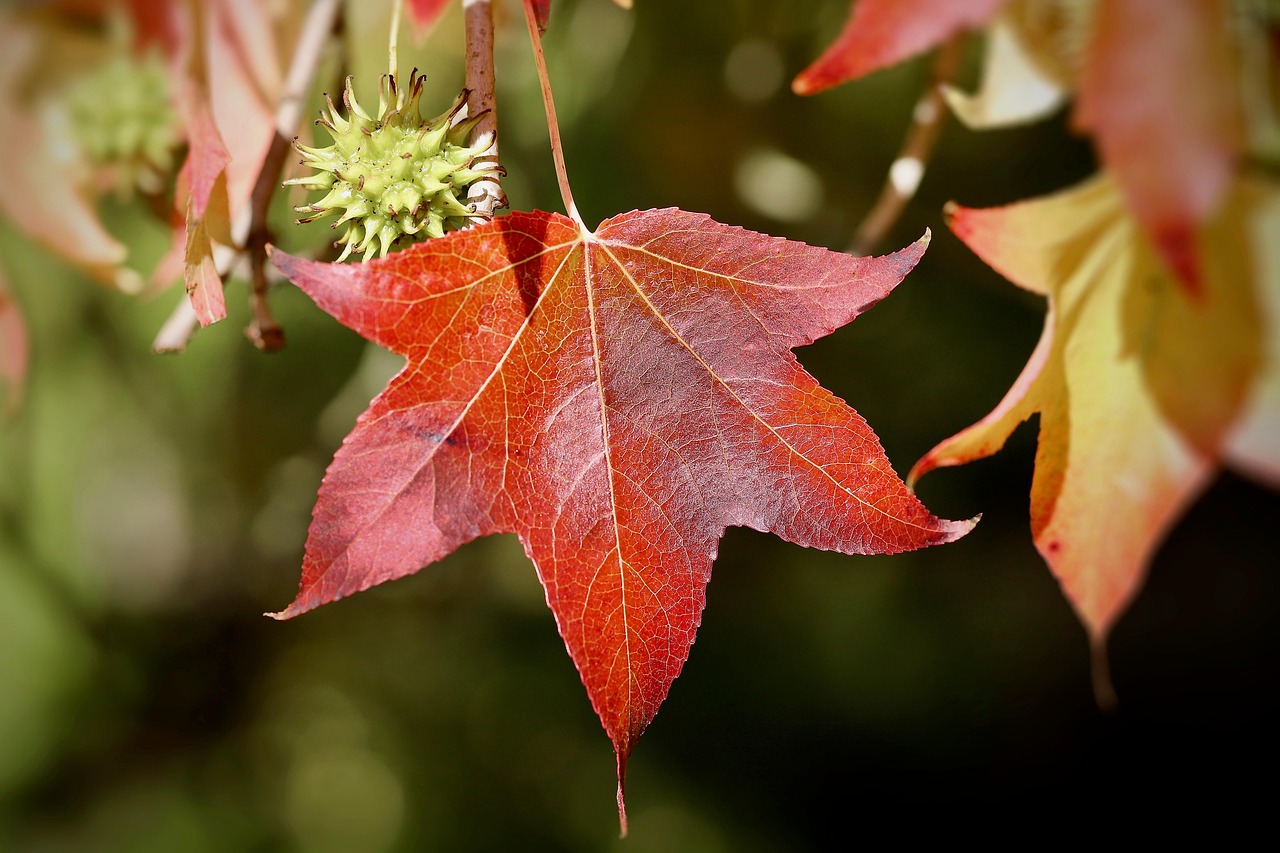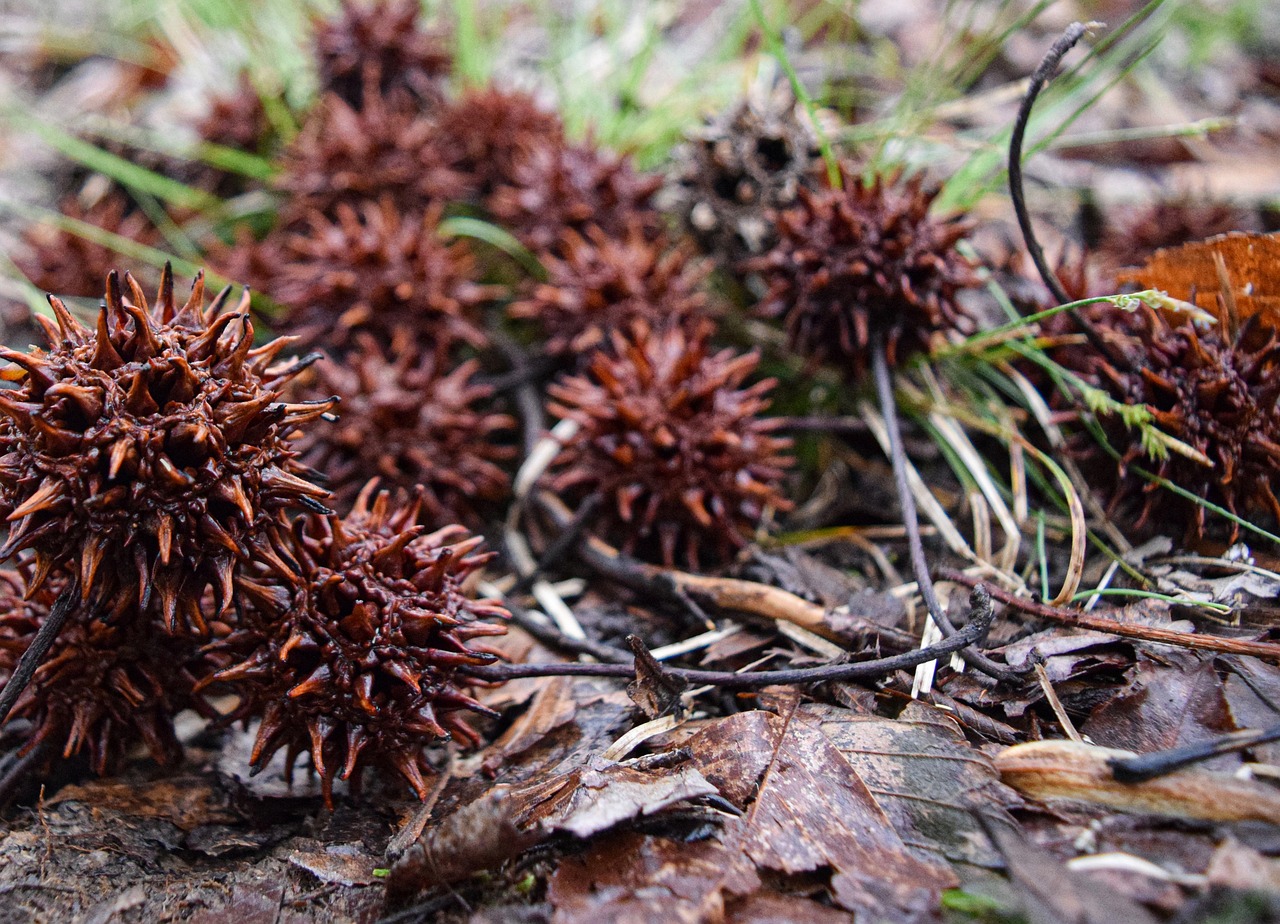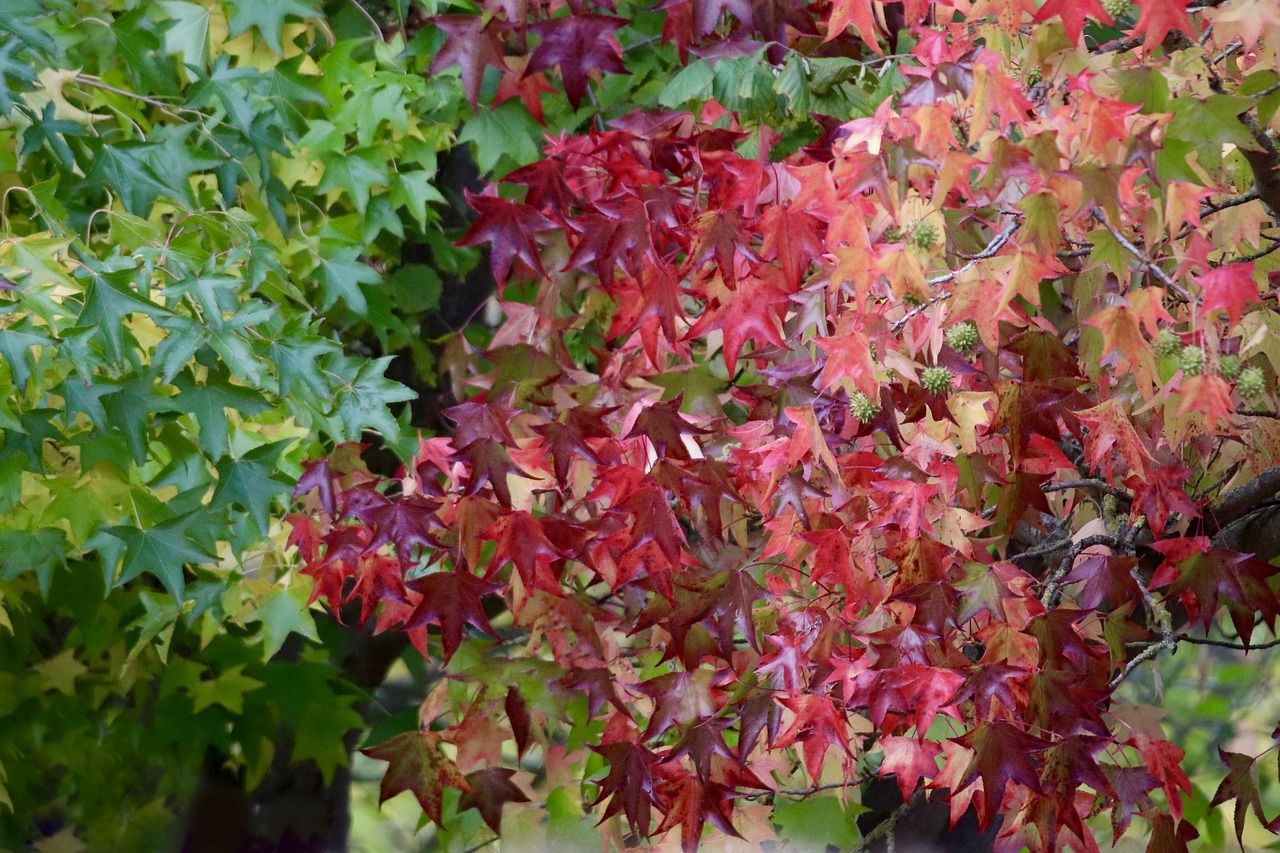Yes, you can safely burn sweetgum tree wood in fireplaces, but it requires proper seasoning due to its high resin content. Seasoned wood produces less smoke and burns more efficiently, making it a viable option for wood burning.
The sweetgum tree, known scientifically as Liquidambar styraciflua, is native to the southeastern United States. It is a deciduous tree that can grow up to 100 feet tall. Sweetgum trees are easily recognized by their star-shaped leaves and spiky seed balls. These trees are often valued for their aesthetic appeal and the unique qualities of their wood.
When considering whether to burn sweetgum wood, it is essential to understand its characteristics. The wood has a unique grain pattern and can be quite beautiful when finished. However, sweetgum wood also contains a considerable amount of resin, which affects how it burns. This resin can contribute to a sooty buildup in chimneys if the wood is not properly seasoned.
Characteristics of Sweetgum Wood

Sweetgum wood has several notable characteristics that can influence its use as firewood:
- Density: Sweetgum wood is moderately dense, which allows it to burn relatively hot.
- Resin Content: The high resin content means that sweetgum can produce more smoke and soot than other types of firewood.
- Seasoning Time: It typically requires at least 6 to 12 months of seasoning for optimal burning.
- Burning Quality: When seasoned properly, it can provide a good heat output, but burning green wood can lead to issues like excessive smoke.
The following table summarizes the key attributes of sweetgum wood for burning:
| Characteristic | Details |
|---|---|
| Heat Output | Moderate to High |
| Smoke Production | High if not seasoned |
| Seasoning Time | 6 to 12 months |
| Soot Buildup | Possible if burned green |
Understanding these characteristics is crucial for anyone considering sweetgum wood as a firewood option. Properly seasoned sweetgum can be an excellent choice for heating spaces, but careful attention must be paid to avoid burning it while still green. This helps minimize smoke and potential chimney problems.
In addition to its burning qualities, sweetgum wood is also used for various woodworking projects. Its attractive grain and ability to take stain well make it popular among carpenters and furniture makers. However, for the purpose of fireplace burning, seasoning and managing resin production is paramount.
When planning to use sweetgum wood in a fireplace, it’s advisable to mix it with other types of hardwoods. This practice can help balance out the burning characteristics and provide a more consistent heat output. Other hardwoods such as oak or hickory can complement sweetgum’s burning profile effectively.
Seasoning Sweetgum Wood
Seasoning is a crucial process that involves drying out freshly cut wood to reduce its moisture content. For sweetgum wood, proper seasoning is particularly important due to its high resin levels. If you attempt to burn green sweetgum wood, you may experience excessive smoke, poor heat output, and increased soot buildup in your chimney.
To effectively season sweetgum wood, follow these guidelines:
- Cut the Wood: After felling the tree, cut the wood into manageable lengths, typically between 16 to 20 inches for fireplace use.
- Split the Logs: Splitting the logs increases the surface area and accelerates the drying process. Smaller pieces will dry faster than larger ones.
- Store Properly: Stack the wood in a well-ventilated area, preferably off the ground. Use a wood rack or pallets to promote airflow. Cover the top with a tarp to protect it from rain while leaving the sides open for ventilation.
- Monitor Moisture Levels: Aim for a moisture content of around 20% or less for optimal burning. You can use a moisture meter to check the levels.
Following these steps ensures that the sweetgum wood is adequately seasoned and ready for burning in your fireplace.
Burning Characteristics of Sweetgum Wood
The burning characteristics of sweetgum wood can vary based on several factors, including how well it has been seasoned and its moisture content. Here are some key aspects to consider:
- Heat Output: When properly seasoned, sweetgum wood can produce a moderate amount of heat. This makes it suitable for home heating when mixed with denser hardwoods.
- Burn Rate: Sweetgum tends to burn fairly quickly compared to denser woods. Therefore, you may need to add more logs during a fire to maintain heat levels.
- Smoke Production: As mentioned earlier, unseasoned sweetgum wood produces a significant amount of smoke. This can lead to creosote buildup in your chimney, which poses a fire hazard.
- Odor: Burning sweetgum can emit a pleasant aroma, especially when seasoned correctly. However, burning green wood may produce an unpleasant smell due to excess moisture and resin.
Best Practices for Burning Sweetgum Wood
To ensure safe and effective burning of sweetgum wood in your fireplace, consider the following best practices:
- Always Season Your Wood: As previously discussed, always ensure that your sweetgum wood is thoroughly seasoned before burning.
- Mix with Other Woods: Combining sweetgum with denser hardwoods like oak or maple can help create a more balanced fire. This mix enhances heat production and reduces smoke.
- Avoid Overloading the Fireplace: Do not overcrowd your fireplace with wood. This can lead to inefficient burning and increased smoke production. Instead, add logs gradually as needed.
- Regularly Clean Your Chimney: Frequent chimney cleaning is essential when burning sweetgum wood, especially if you burn it regularly. This helps prevent dangerous creosote buildup.
By adhering to these best practices, you can enjoy the benefits of sweetgum wood while minimizing risks associated with burning wood in fireplaces.
Environmental Considerations
When using sweetgum wood as firewood, it’s essential to consider its environmental impact. Sweetgum trees are relatively common and grow quickly, making them a sustainable choice for firewood if harvested responsibly. Additionally, they provide habitat for various wildlife species.
However, overharvesting any tree species can lead to ecological imbalances. Therefore, it is crucial to source sweetgum wood sustainably, ensuring that you are not contributing to deforestation or habitat loss.

If possible, consider sourcing your firewood locally. This not only supports local economies but also reduces transportation emissions associated with moving firewood over long distances.
In summary, understanding how to properly season and burn sweetgum wood helps maximize its benefits while minimizing environmental impacts. Always prioritize safety and sustainability in your approach to using this versatile firewood option.
Health and Safety Considerations

When burning sweetgum wood in fireplaces, it is essential to consider various health and safety aspects. Understanding these factors can help you enjoy the warmth and ambiance of a fire while minimizing health risks and ensuring safety.
Indoor Air Quality
Burning wood can release particulate matter and volatile organic compounds (VOCs) into the air. These substances can negatively affect indoor air quality and may pose health risks, especially for individuals with respiratory conditions. Here are some ways to improve indoor air quality when burning sweetgum wood:
- Use a Properly Functioning Fireplace: Ensure that your fireplace is well-constructed and properly ventilated to minimize smoke backdrafts.
- Invest in a Good Hearth Insert: A fireplace insert can improve efficiency and reduce smoke emissions, leading to better air quality.
- Avoid Burning Treated Wood: Only burn natural wood, as treated wood can release harmful chemicals into the air when burned.
Chimney Maintenance
Regular chimney maintenance is vital for preventing chimney fires and ensuring safe burning practices. Here are some recommended maintenance tips:
- Annual Inspections: Schedule an annual inspection of your chimney by a qualified professional. This inspection should include checking for creosote buildup and structural integrity.
- Cleansing: Clean your chimney regularly, especially if you burn sweetgum wood frequently. A clean chimney reduces the risk of fires caused by creosote buildup.
- Check for Blockages: Ensure that there are no blockages in the chimney, such as bird nests or debris, which can inhibit proper airflow.
Alternative Uses for Sweetgum Wood
While sweetgum wood is suitable for burning, it also has several other uses that showcase its versatility. Here are some alternative applications:
- Furniture Making: Due to its attractive grain and workability, sweetgum wood is often used for crafting furniture.
- Cabinetry: Sweetgum can be an excellent choice for cabinetry due to its durability and aesthetic appeal.
- Woodworking Projects: Hobbyists and professionals alike use sweetgum wood for various woodworking projects, such as turning bowls or making decorative items.
Crafting with Sweetgum Wood
If you enjoy woodworking, using sweetgum can provide unique opportunities. The wood can take stains and finishes well, allowing for a variety of designs. Here are some tips for working with sweetgum wood:
- Proper Drying: If using freshly cut sweetgum, ensure it is properly dried to avoid warping during the crafting process.
- Tool Selection: Use sharp tools when working with sweetgum to achieve clean cuts and finishes.
- Experiment with Stains: Try different stains to highlight the wood’s natural beauty and grain pattern.
The Economic Aspects of Sweetgum Wood
The economic viability of sweetgum wood as firewood and lumber is worth considering. Sweetgum trees are plentiful, making them an accessible resource for firewood. Here are some economic factors to keep in mind:
- Cost-Effective Firewood: Sweetgum wood is often less expensive than more popular hardwoods like oak or maple, making it an attractive option for budget-conscious consumers.
- Sustainable Resource: Since sweetgum trees grow quickly and are abundant, they can be harvested sustainably without depleting local resources.
- Market Demand: The demand for sweetgum wood may vary by region, affecting pricing and availability. Research local markets to find the best deals on firewood or lumber.
The economic considerations surrounding sweetgum wood highlight its potential benefits as a resource for both personal use and commercial applications. Understanding these aspects can help you make informed decisions about using sweetgum wood effectively and responsibly.
Additional Considerations for Burning Sweetgum Wood
Beyond the previously discussed aspects, there are several additional considerations to keep in mind when deciding to burn sweetgum wood in your fireplace. These factors can further enhance your experience and ensure safe usage.
Local Regulations
Before burning sweetgum wood, check local regulations regarding wood burning. Some areas may have restrictions on burning certain types of wood due to air quality concerns. Understanding these regulations is crucial to avoid fines and to promote environmental responsibility.
- Burn Bans: During certain times of the year, particularly in dry seasons, burn bans may be enacted. Be aware of these restrictions in your area.
- Air Quality Standards: Some regions have air quality standards that affect the type of wood you can burn. Always stay informed about these guidelines.
Firewood Storage Tips
Proper storage of sweetgum wood is essential for maintaining its quality and ensuring it is ready for burning. Here are some helpful storage tips:
- Choose a Dry Location: Store your firewood in a dry, sheltered area to prevent moisture absorption.
- Cover the Top: Use a tarp or cover to protect the top of the wood pile from rain while allowing airflow on the sides.
- Avoid Ground Contact: Store firewood off the ground to prevent moisture from seeping up from the soil.
Firewood Alternatives

If you find that sweetgum wood is not suitable for your needs, there are alternative firewood options available. Consider the following types:
- Oak: Known for its high heat output and long burn time, oak is a popular choice among firewood enthusiasts.
- Maple: Maple wood burns hot and clean, making it another excellent option for fireplaces.
- Birch: Birch is easy to light and produces a pleasant aroma when burned, although it burns faster than denser hardwoods.
Each type of wood has its unique characteristics, so consider experimenting with different varieties to find what works best for your fireplace and heating needs.
Final Thoughts
In conclusion, sweetgum wood can be safely burned in fireplaces if properly seasoned and managed. Understanding its characteristics, including resin content and burning qualities, is crucial for maximizing its benefits. While sweetgum offers a cost-effective and sustainable firewood option, it is essential to prioritize safety through proper chimney maintenance and awareness of local regulations.
By combining sweetgum wood with other hardwoods and following best practices for storage and burning, you can enjoy a warm and inviting fire while minimizing risks associated with wood burning. Additionally, considering alternative firewood options can enhance your experience and provide you with more choices for effective home heating.
The economic aspects also highlight the viability of sweetgum as a resource for both personal and commercial use. With responsible sourcing and sustainable practices, sweetgum wood can contribute positively to your home heating needs while being mindful of environmental impacts.
Whether you are an experienced wood burner or new to using firewood, understanding the nuances of sweetgum wood will help you make informed choices that enhance your comfort and safety at home.
